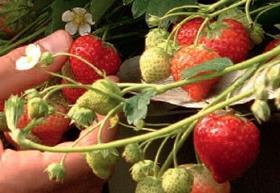
Italy's strawberry sector has contracted over the past year, with production area for the fruit decreasing by 7 per cent year-on-year to 3,500ha.
According to a report published by Italian fresh produce marketing and research agency CSO, the downturn was 'to be expected' following a difficult campaign in 2009, during which time prices were extremely low.
Apart from Sicily, where production area is set to remain more or less stable, output in all other major growing regions across Italy is set to fall in 2010, the organisation said.
In Emilia-Romagna, strawberry production area is set to fall 18 per cent compared with 2009, while in Veneto and Piedmont growers anticipate a 5 per cent and 4 per cent reduction respectively.
In the south of the country, including Campania, Calabria and Basilicate – where there has been significant investment in strawberry production over the past few years – total surface area is set to drop by 10 per cent.
However, a spokesperson for CSO insisted the decrease was in line with other major European strawberry producers, including Spain.
'This trend towards a resizing of strawberry production, 80 per cent of which is protected and 20 per cent of which is open-field, is nevertheless in line with the trends observed in Spain,' the spokesperson said.
'Between the 2008/09 and the 2009/10 campaigns, more than 1,100ha of strawberries have been lost in Huelva alone, which is the area with the largest crop.'
Despite the decrease in availability, Italian producers will be looking to compete on quality and offer a broad range of varieties.
CSO's analysis points to ongoing diversification in Italy's varietal mix for strawberries, with the agency pointing to their strong organoleptic characteristics which, it said, should be favoured by the market and by consumers.
'The Italian varietal panorama is in fact dominated by Eva, followed by Roxana and Veneto,' the group revealed.
'In Emilia-Romagna Alba still remains the most common, but Roxana is growing,' the spokesperson continued. 'In Campania, although there is an overall predominance of Camarosa, Candonga is also becoming stronger thanks to its excellent quality characteristics and is now the most commonly grown variety in Basilicata.'






No comments yet